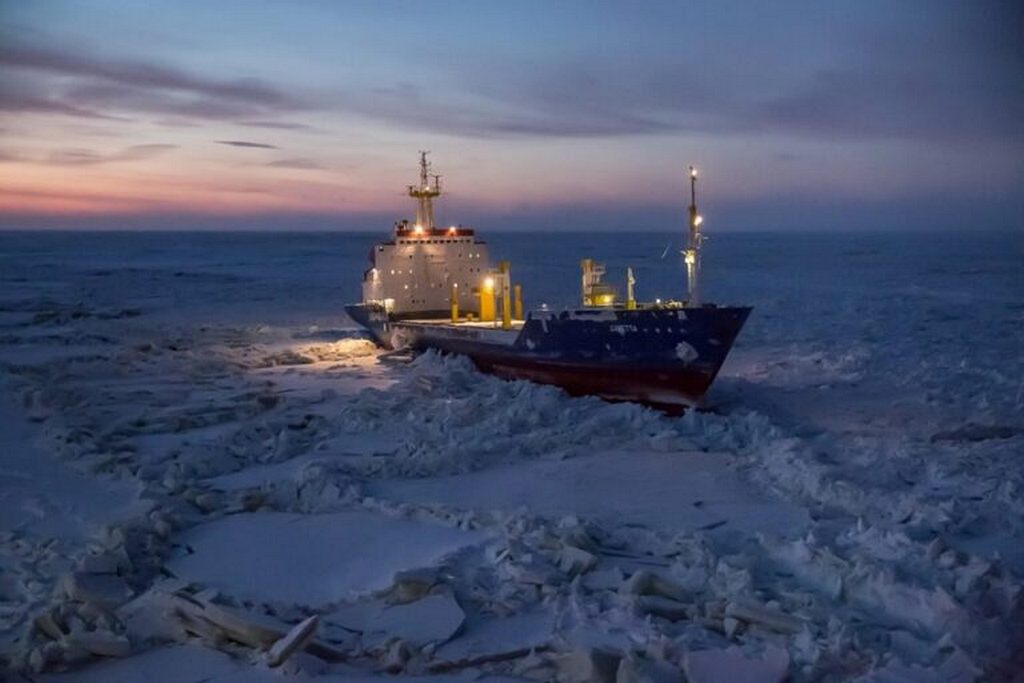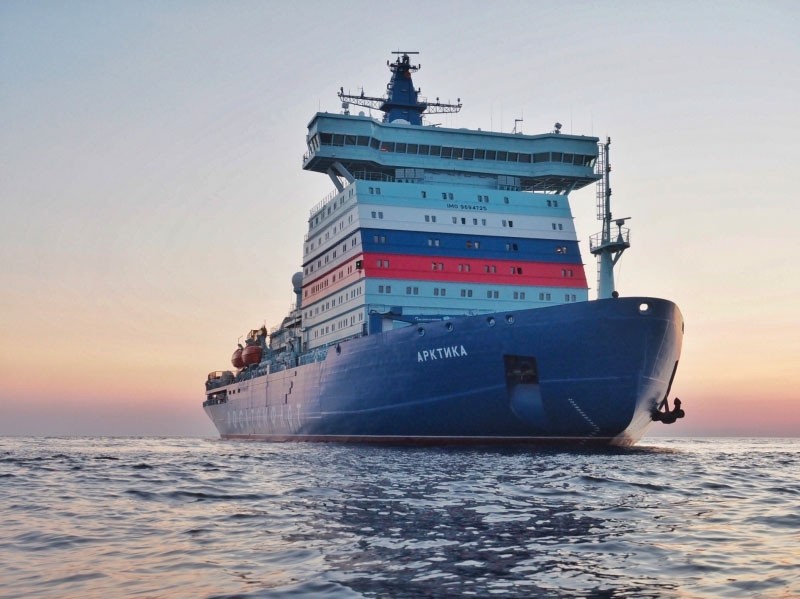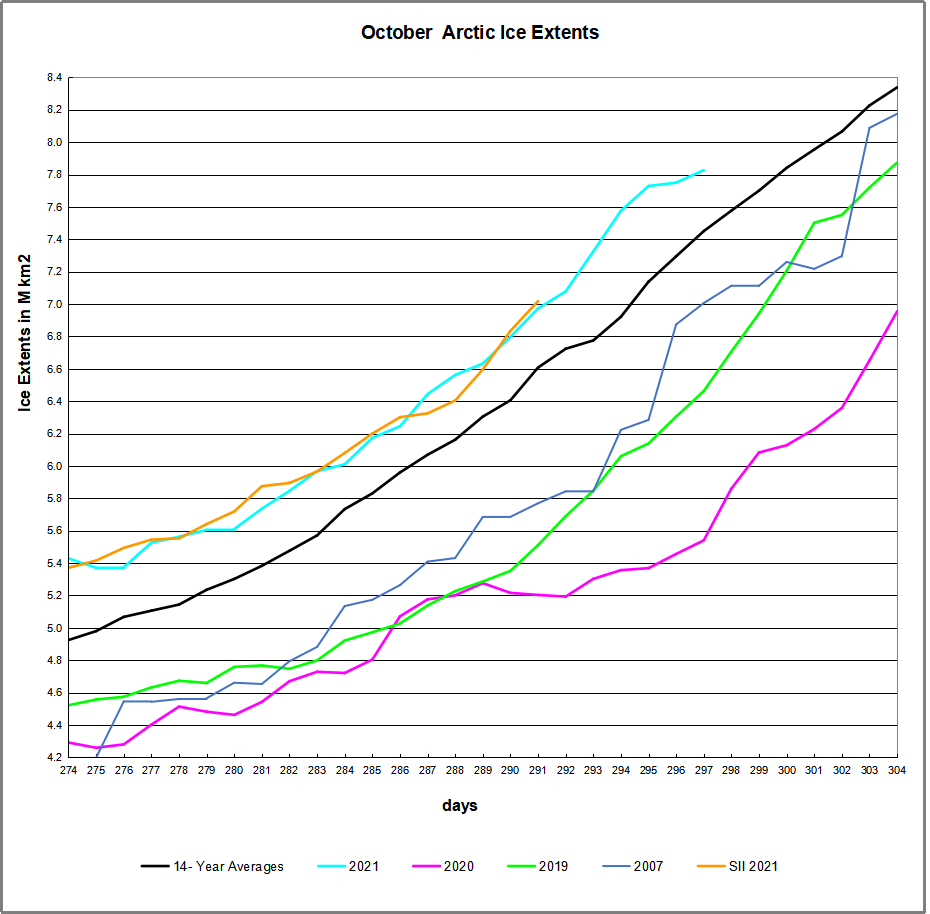The animation shows on the left ice extending over the last 18 days all the way to the Russian shoreline, filling in East Siberian (lower), Laptev (middle) and Kara Seas (top). Thus the North Sea Route is covered with ice at this time.
The chart above summarizes shipping traffic through the NSR in 2021, comprising 65 transits along the route between Asia on the right and Europe on the left. Source: Northern Sea Route Information Office

Russia has big plans for the NSR including a new class of container ships (above) designed specifically for the NSR. As explained in the Barents Observer, Russia is not counting on an ice-free Arctic shipping lane any time soon. Shipping on Northern Sea Route has course for 35 million tons in 2021. Excerpts in italics with my bolds.
There is considerable growth in shipments on Russia’s remote Arctic route, but shippers will have to boost deliveries by more than 100 percent in only two years if they are to reach the target set by the Kremlin.

The Arktika is Russia’s first LK60 icebreaker. Photo: Rosatom
Moscow sees the Northern Sea Route as a top priority project that ultimately could open an alternative trade route between Asia and Europe. Several major nuclear-powered icebreakers are under construction, among them the first Lider-class ship.
The 80 million tons target for the Northern Sea Route was set by Vladimir Putin in his so-called May Decrees in 2018. Russian state officials have since struggled to find ways to meet the ambitious goal.
According to Deputy Prime Minister Yuri Trutnev, a fleet of five LK60 (project 22220) icebreakers will be in operation by 2026 and by 2027 – the first Lider will sail in the Arctic waters. In a government meeting in early October this year, Trutnev outlined the need for as many as 30 new tankers, 40 bulk carriers and 22 container ships for Arctic shipping.
Year-round shipping on the route will start already in 2023-2024, he explained.
The graph below shows October refreezing is tracking about 400k km2 above the 14-year average.
SII is having technical difficulties and has not updated in more than a week. Note also the much greater ice extent in 2021 compared to 2020, 2019, or 2007.




Reblogged this on Climate Collections.
LikeLike